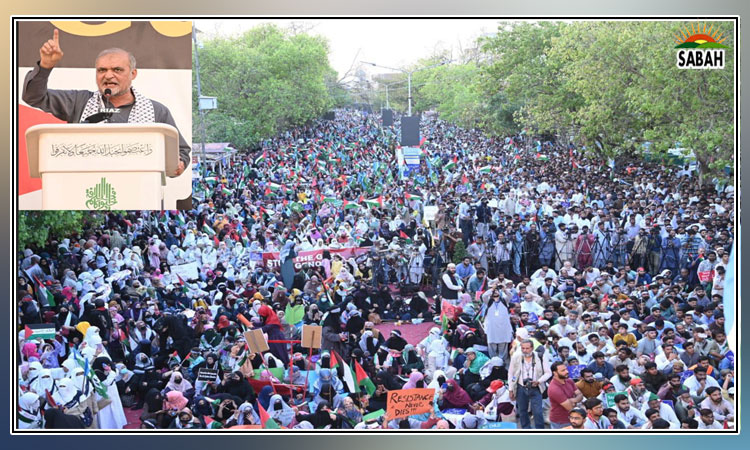Climate adaptation …. Ajaz Ahmed
SOCIETIES across the globe face the hardest and most long-lasting challenge to human progress in terms of climate change. Many regions are already feeling the severe impact of climate change. The developing countries, with their limited preparedness to respond to natural disasters triggered by climate change, are especially vulnerable. Thus, reducing the risk of climate catastrophes and developing the resilience of vulnerable communities has become an increasingly urgent task.
However, tackling the impact of climate change in fragile settings requires transformative, and not incremental, action. This is practically impossible without having adequate resources and the technical expertise required to make infrastructure and livelihood resilient to climate change.
Yet, there is a substantial shortfall of resources, resulting in an adaptation gap, which is the difference between the climate adaptation needs of a society in terms of resources and what has been done to make social and economic systems resilient to climate change.
Recently, the United Nations Environment Programme (UNEP) released its flagship report on the adaptation gap. The report claims that the adaptation finance gap is between $194 billion and $366bn per year, which is at least 10 times less than adaptation finance needs. As per the report, over time this gap has widened further, and conservative estimates show that it is about 50 per cent higher than the previous estimates. Adding insult to injury (owing to the reluctance of the developed country parties), the limited progress on establishing the Loss and Damage Fund is also disheartening.
The adaptation gap is more severe in developing countries.
The UNEP report elucidated that the current trajectory of temperature increase is putting us on a dangerous path of an expected two-degree Celsius increase in temperature by the end of the century. This means that even achieving the ambitious mitigation targets would not prevent unfavourable outcomes, hence adapting to a changing climate is a matter of survival. However, as climate change is becoming more frequent, intense, and abrupt, and the risks of irreversible damage are rising, climate finance flows have contracted. Thus, the need to taper the adaptation finance gap and speed up global efforts for climate adaptation has never been more crucial.
The adaptation gap is more severe and pronounced in developing countries, such as Pakistan, due to their lack of capacity and preparation to mobilise climate finance. This is also because climate finance is an underdeveloped subject, while the share of resources allocated for climate adaptation is often very small. Furthermore, adaptation planning and implementation are missing at the local level where the vulnerable communities are located, resulting in their greater exposure to natural disasters driven by climate change.
In the current state of affairs, Pakistan must focus on three things: developing technical and institutional capacity to seek adaptation finance; mobilising resources to invest in climate adaptation from international, domestic and private sources of finance; and reforming domestic financial institutions to eliminate hostility, and adopt modern practices which encourage financial flows and pave the way to financial inclusion, including adaptation finance investment flows. Adopting novel approaches to seek climate finance and investing in the resilience of developing communities are not only beneficial from the business point of view but they also have the potential to reduce climate risks and improve equity and social justice.
Planners in Pakistan must understand that climate-induced shocks and stresses will threaten fiscal stability, resulting in undermining the developing progress and worsening the prevailing economic downturn. Governments across the world have already recognised this and are in the process of setting aside the budget for investment in climate adaptation. Research indicates that just a small fraction of the total wealth can develop climate resilience, saving millions of lives and trillions worth of damage to assets.
Setting aside a climate budget is thus inevitable, except that post-disaster payouts and the rehabilitation of affected populations would be in addition to the cost of the damage and losses to infrastructure and livelihood. Hence, investment in making social and economic systems more resilient would not only help guard the population against the impact of climate catastrophes but would also cushion the dividends of economic growth which are otherwise exposed to climate risk.
The writer has a PhD degree in economics from Durham University UK and works as the director of research programmes for the Social Protection Resource Centre Islamabad.
Courtesy Dawn, November 27th, 2023












